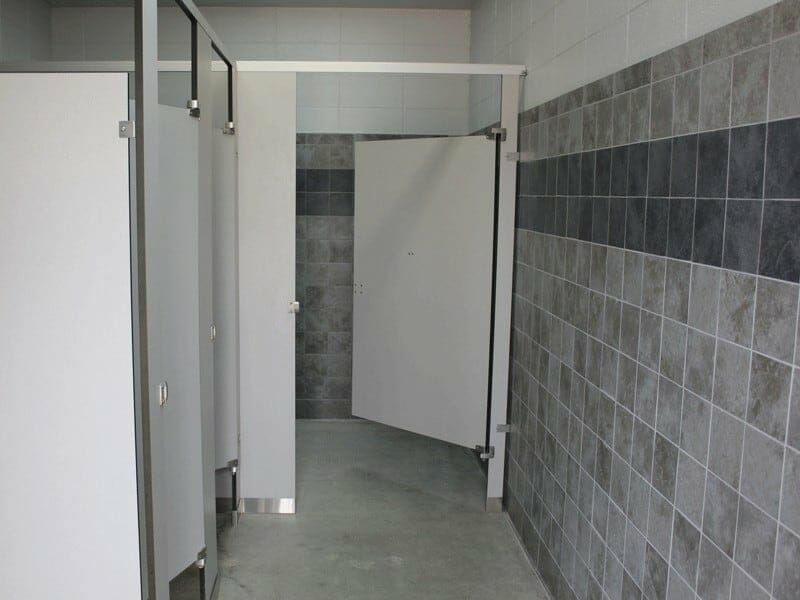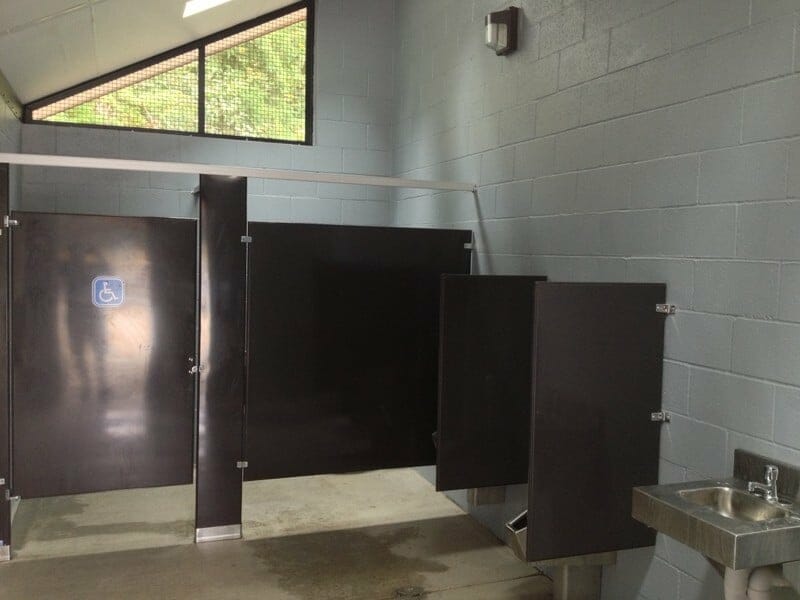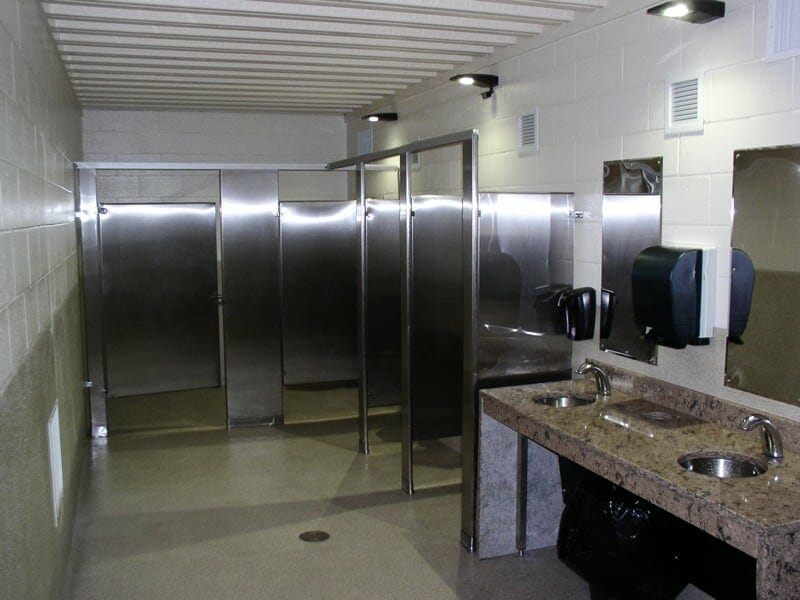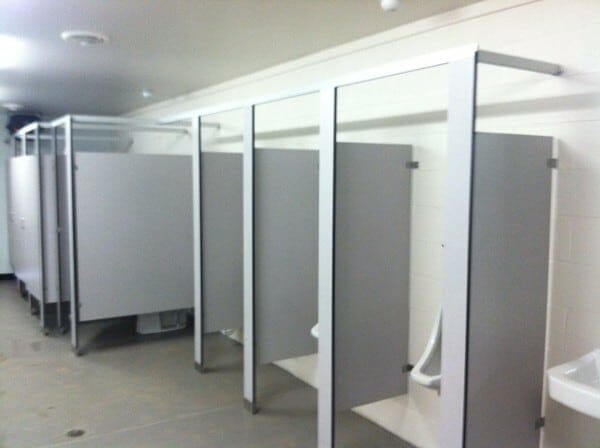
Romtec designs and supplies restrooms and many other types of buildings for both public and private applications. Stall partitions are an important feature in every multiuser restroom. These barriers are one of the most exposed components in a restroom and are often subject to heavy wear-and-tear and even vandalism. Choosing the right material for your restroom partitions can help mitigate some of these issues entirely, while extending the time between scheduled maintenance. Romtec helps by offering advice to clients toward making an informed decision in choosing the best partition material for your unique restroom application.

HDPE Partitions
HDPE, or high-density polyethylene, is one of the most robust materials for restroom partitions and is a popular choice in public restrooms. Unlike other plastic partitions, HDPE does not have an inner core, and its solid construction results in an impact resistant material that wards off minor abrasions. One of the biggest advantages of this material is the lack of required maintenance, once HDPE partitions are installed, they generally require little upkeep besides regular cleaning. HDPE is also resistant to moisture, and it inhibits microbial growth, making it an ideal choice for showers, community pools, and other applications where water is abundant. This material has few disadvantages and works well in nearly any application, however the robustness of HDPE may not be necessary in all applications, especially private restrooms which are not nearly as prone to vandalism as their public counterparts.

Phenolic Partitions
Phenolic is another plastic material frequently used in restroom partitions, and it is created using synthetic resins bound in a base material. Similar to HDPE, phenolic partitions offer excellent resistance to physical damage and are typically backed by a lengthy warranty depending on the manufacturer. Although, phenolic is not as moisture resistant as HDPE, it does offer some degree of resistance. The melamine sheathing material is resistant to some degree of chemical cleaning agents. When cleaning these partitions it is best to use a solvent cleaner or gentler cleaning methods. Oxidants and strong bases can damage the surface of phenolic partitions, causing discoloration. As one of the most cost-effective restroom partitions, phenolic offers many benefits in both public and private restrooms. One disadvantage with this material is that the core is often made from laminated layers of paper or strand board, leaving it vulnerable to moisture incursion and potential damage.

Powder Coated Steel Partitions
Powder coated steel restroom partitions are an affordable alternative to stainless steel partitions. Steel Partitions are fabricated by sandwiching a cellular honeycomb core for structural support and sound attenuation. The only exposed material is powder coated steel which offers excellent fire resistance making this material ideal in applications that need to meet fire safety standards. Additionally, powder coated steel offers resistances to many restroom conditions, like exposure to water, bacteria, and graffiti. Powder coated steel partitions are available in many colors and styles and nearly any color can be achieved on custom jobs – custom colors may incur additional costs compared to standard options. The only downside to this material is that it can be vandalized by etching off the powder coating, creating an eyesore and a place for rust to form.

Stainless Steel Partitions
Stainless steel partitions are one of the more glamorous options for restroom partitions and offer a stylish and modern aesthetic to their restrooms. Partitions created with stainless steel are fabricated in much the same way as powder coated steel partitions. Stainless steel is durable and long lasting, and often times, it outlives many other components in public restrooms. Choosing a textured stainless steel partitions can further improve the materials already impressive resistance to vandalism and help conceal cosmetic imperfections. Manufacturers will often use recycled steel to fabricate partitions making this an environmentally friendly option.

Choosing the best material for your restroom partitions is often overshadowed by larger aspects of a building design. Consulting an experienced restroom designer like Romtec is a dependable way to make an informed decision around the unique conditions components in your restroom will encounter. Regardless of whether you choose a plastic or metal partition, Romtec can include any brand, style, and configuration of restroom partition into the design of your restroom or shower building. Call Romtec at (541) 496-3541 or email service@romtec.com today for more information about restroom partition materials and restroom buildings!

Comments 1
The selection of materials is a critical decision. It balances budget, durability, aesthetics, and maintenance requirements. Very nice article!